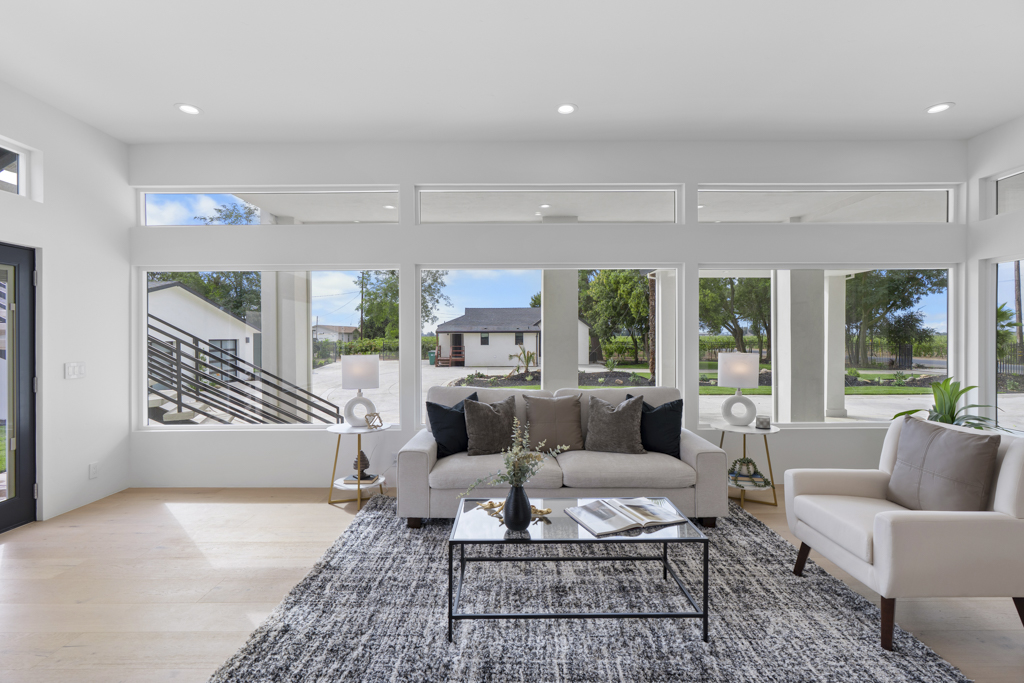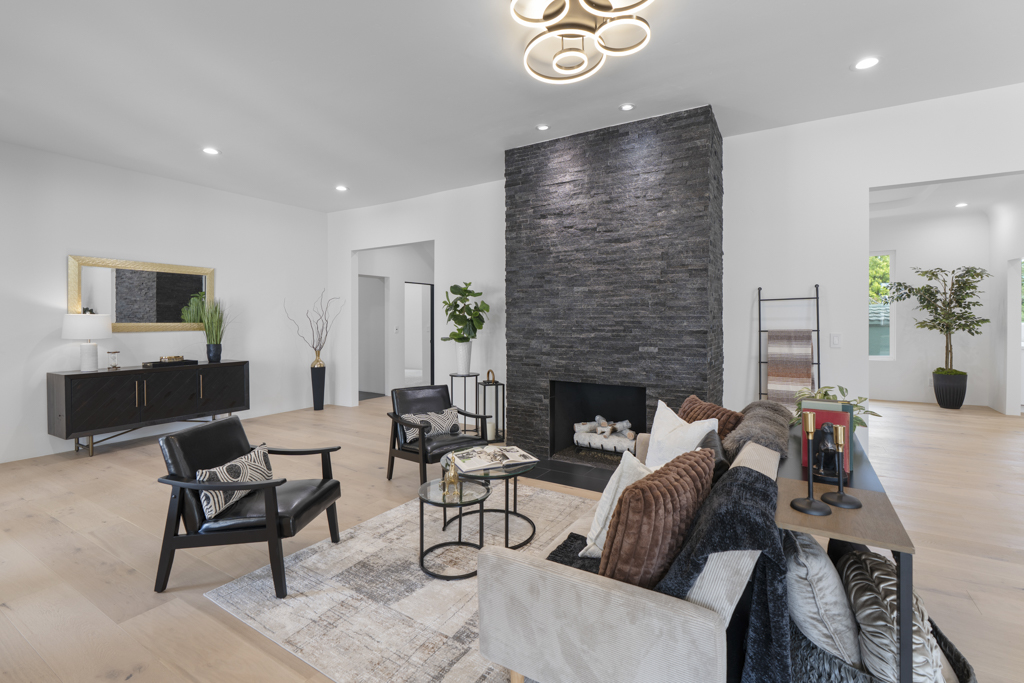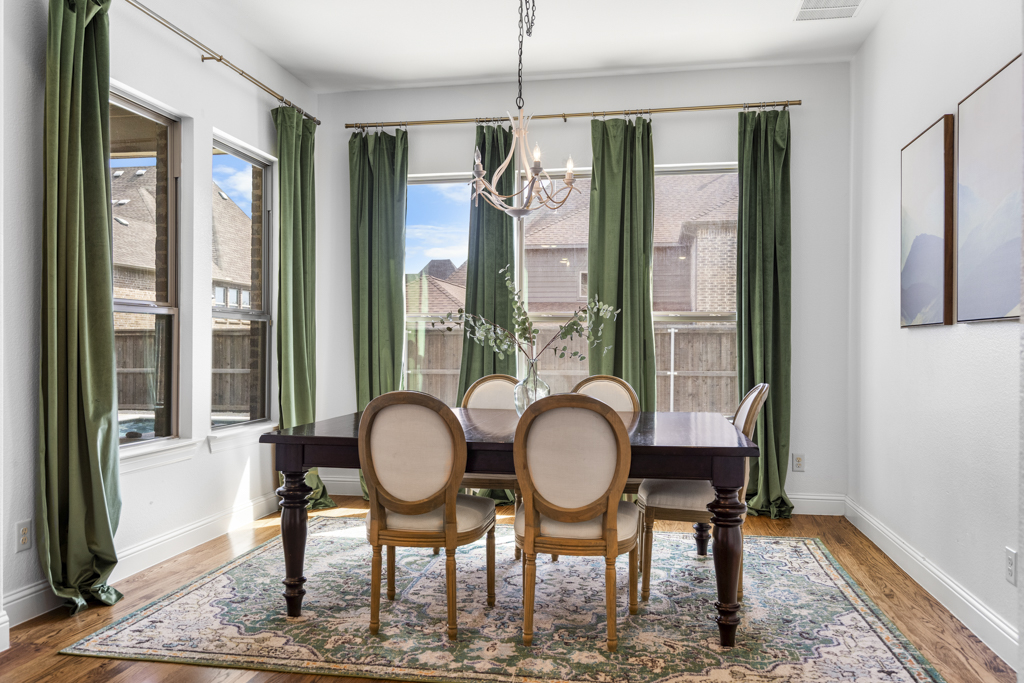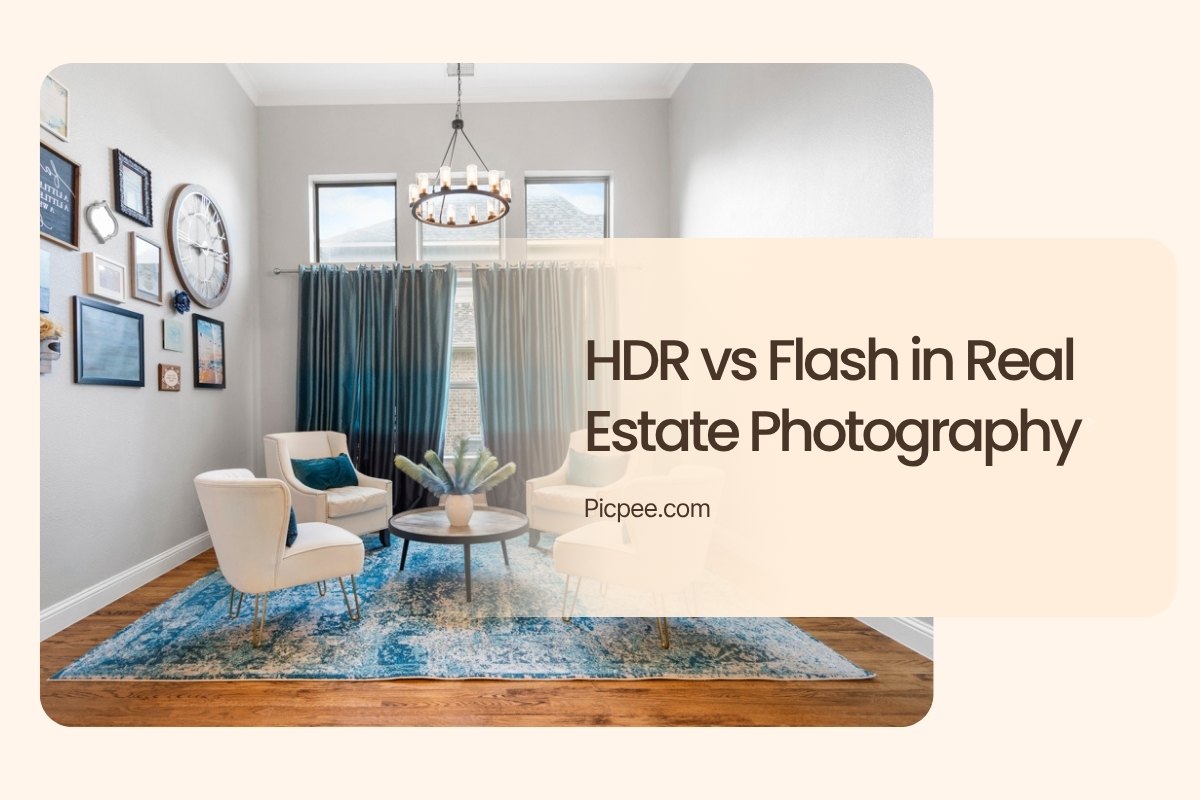When it comes to comparing HDR and Flash in real estate photography, photographers are often faced with the decision of which lighting method is most effective in capturing beautiful, accurate, and compelling real estate photos. The two techniques produce different images, and each has its own strengths and weaknesses. Understanding HDR and Flash in real estate photography is crucial to creating compelling photos that will help sell your property faster and stand out in a competitive market.

Detailed comparison of HDR and Flash real estate photography
|
Criteria
|
HDR Real Estate
|
Flash Real Estate
|
|
Working principle
|
Combine multiple photos with different exposures (under, normal, over) to create a balanced photo.
|
Use a flash or multiple artificial light sources to evenly illuminate the space.
|
|
Light processing
|
Take advantage of natural light, balance light and dark areas through post-production.
|
Actively control light, reproduce color and brightness as desired.
|
|
Advantage
|
- Retains detail in highlights and shadows.
- Natural, warm images.
- Suitable when there is not much lighting equipment.
|
- Sharp images, vibrant colors.
- Consistent light control.
- Effective in low light conditions.
|
|
Disadvantages
|
- Easily "fake" if over-adjusted.
- Can be ghosting if there is movement.
- Time-consuming post processing.
|
- Can make photos look awkward and unnatural.
- Requires a lot of equipment and lighting setup skills.
- Risk of photos being flat and losing depth if overused.
|
|
When to use
|
- A house with many windows, complex lighting.
- Space needs to keep a natural feel.
- Suitable for quick MLS (listing) photos.
|
- Dark space, little natural light.
- Luxury photos, need magazine style.
- When you want to emphasize interior details.
- Real estate with mixed lighting
|
|
Visual style
|
- Soft, natural, realistic.
- Soft shadow transitions
- Wide dynamic range
|
- Sharp, high contrast
- Accurate color reproduction
- Modern, high-end style.
|
|
Equipment & techniques
|
- Quality camera with 3–5 frame bracketing.
- Tripod, memory card
- Post-production with Lightroom/Photomatix.
|
- Flash, trigger, diffuser/softbox.
- Bounce light and ambient light combination.
- Radio trigger
- Bracket
|
|
Processing time
|
It usually takes 10-15 minutes per photo.
|
Usually only takes 3-5 minutes
|
|
Editing techniques
|
- Exposure Merge
- Tone Mapping
- Color Correction
- Detail Enhancement
|
- Basic exposure adjustments
- Minor color corrections
- Local adjustments
- Final sharpening
|
Choosing Between HDR and Flash for Real Estate Photography

In choosing hdr vs flash real estate, consider the specific conditions of the property, the target audience, and the style you wish to convey. HDR is generally more suited for homes with complex lighting scenarios, panoramic views, or when you prefer a softer, more natural look that preserves realism. Real estate photography hdr vs flash can be complementary; sometimes blending both techniques yields the best outcome—using HDR for interiors and flash for specific features or poorly lit rooms.

Ultimately, the decision should align with your workflow, available equipment, and the property's characteristics. For fast-paced single images, HDR might be more efficient, while for high-end listings where detail and perfection matter, the use of flash can produce superior results. Developing a nuanced understanding of each method allows you to adapt to each shoot’s unique demands effectively.
Conclusion
The debate between HDR and Flash in real estate photography centers on understanding the strengths and limitations of each lighting technique. Both methods require skill and expertise to apply effectively in different property settings. Ultimately, whether using HDR or Flash, the goal is to produce high-quality, visually compelling images that attract buyers and help homes sell faster. With Picpee real estate photography retouching, you can take these results to the next level—ensuring every photo is polished, professional, and market-ready.
 Single Exposure
Single Exposure Room Cleaning
Room Cleaning Reels
Reels Blended Brackets (HDR)
Blended Brackets (HDR) Changing Seasons
Changing Seasons Slideshows
Slideshows Flambient
Flambient Water in Pool
Water in Pool Individual
Individual 360° Image Enhancement
360° Image Enhancement Lawn Replacement
Lawn Replacement Team
Team Virtual Staging
Virtual Staging Rain to Shine
Rain to Shine Add Person
Add Person Remodel
Remodel Custom 2D
Custom 2D Remove Person
Remove Person 360° Image
360° Image Custom 3D
Custom 3D Background Replacement
Background Replacement Day to Dusk
Day to Dusk Property Video
Property Video Cut Outs
Cut Outs Day to Twilight
Day to Twilight Walkthrough Video
Walkthrough Video Change color
Change color 1–4 Items
1–4 Items



